Day 35 - Melrose to Burra

Today didn't exactly go to plan, but it leads me to reflection and an interesting place nonetheless.
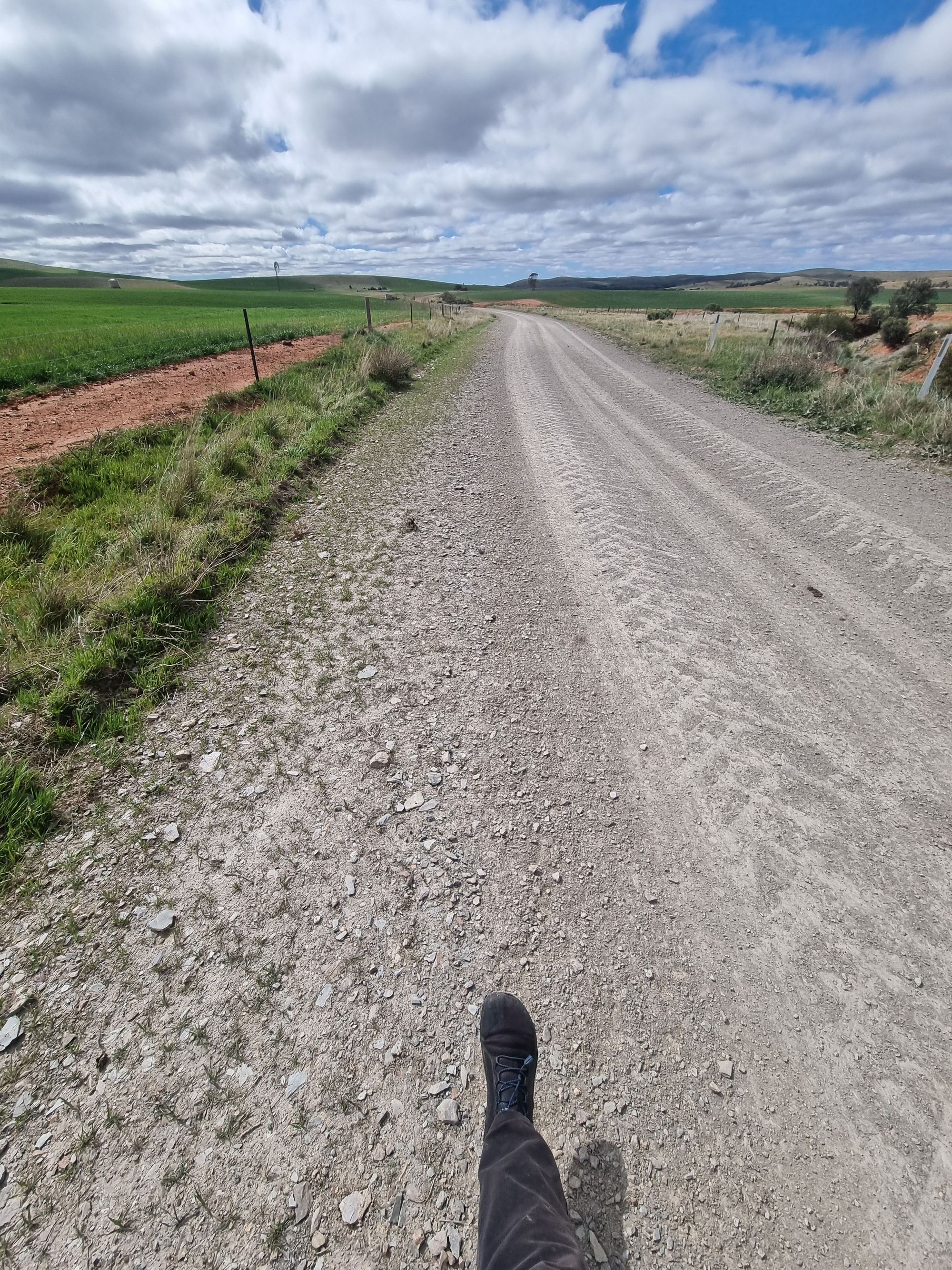
Quick Stats
- 3 hours on bike
- 175 km
- 12840 km total
It's about time to start heading home, I've got just one more detour I want to make near Hallett before hitting the Barrier Hwy to Broken Hill and beyond.
Before any of that, though, I wake at 6 am with plans to summit Mt Remarkable. I get dressed, pack my warm gear and walk out the front door. It's 3°C at the bottom of the mountain ... and the mountain is covered in thick cloud still.

I bail on that plan and opt for a loop walk around the lower hills. There's a lot of birdlife already awake for the morning and a fair bit of colour in the flora. I summit the first hill and look back toward Melrose.

As well as being a hub to some of the lower Flinders Ranges hikes, Melrose is a bit of a Mecca for mountain biking, with trails weaving every which way. Surprisingly there's a group of kids hitting the trails before school. I find a creepy metal sculpture, presumably celebrating mountain biking.
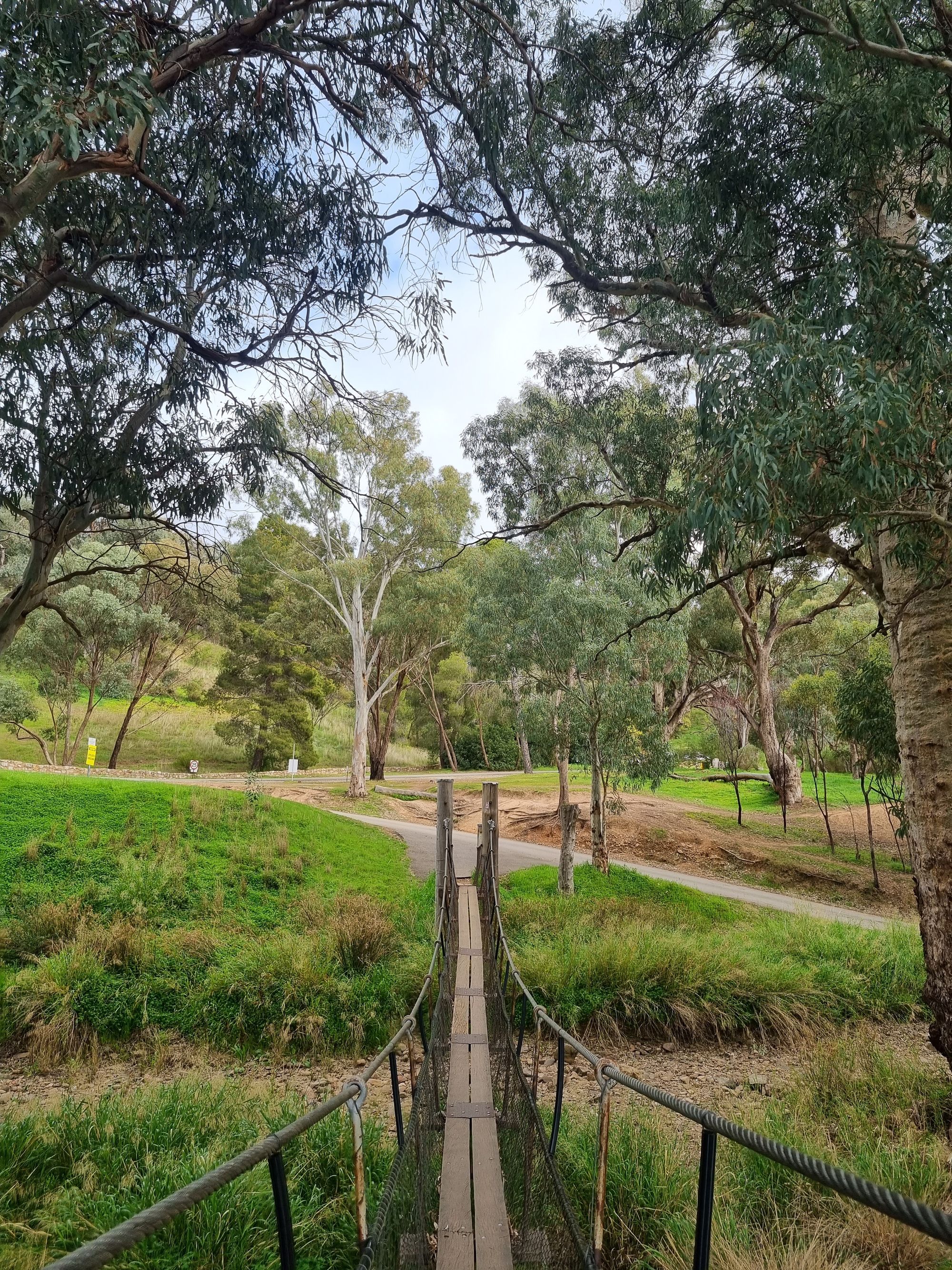
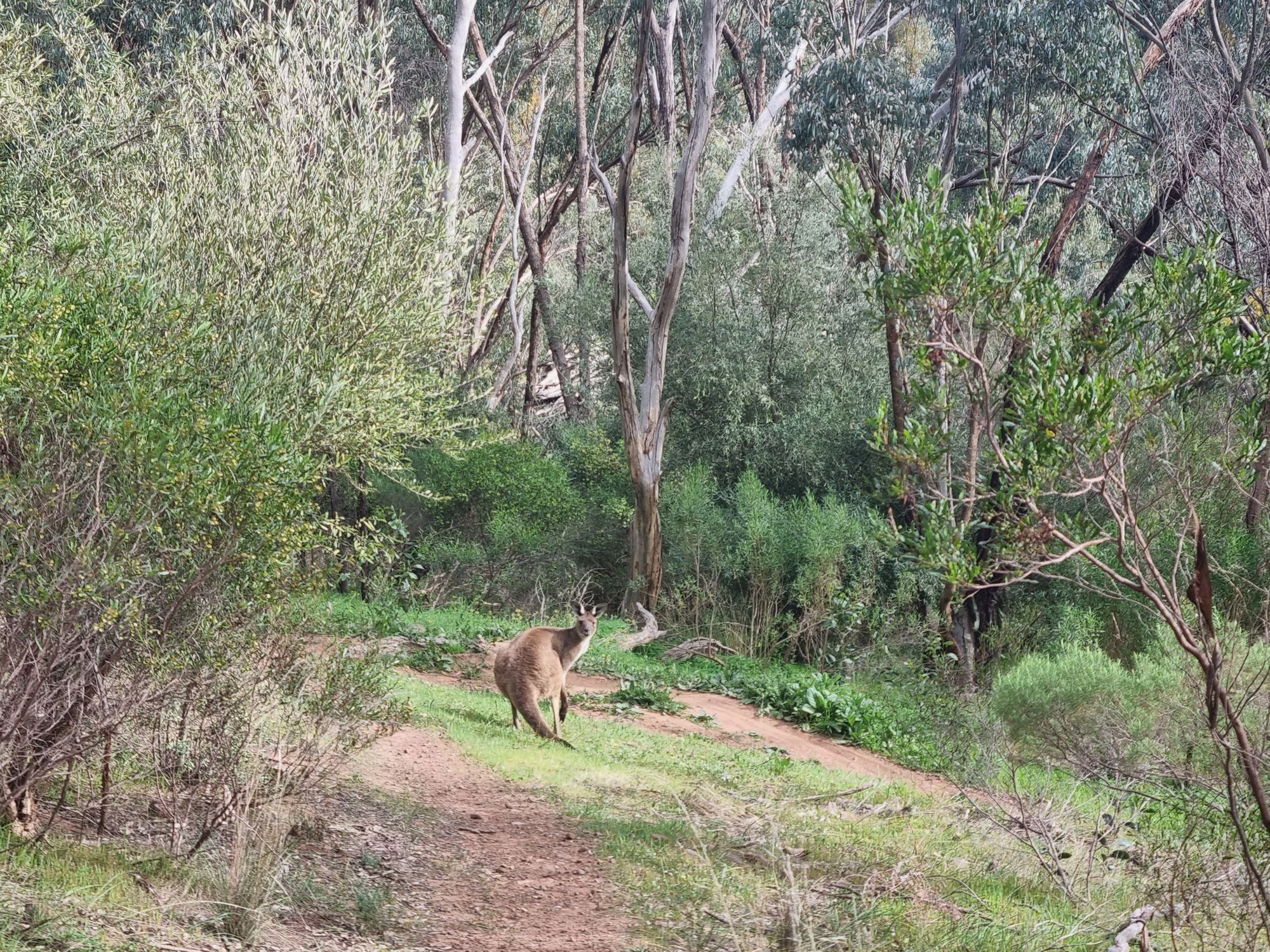
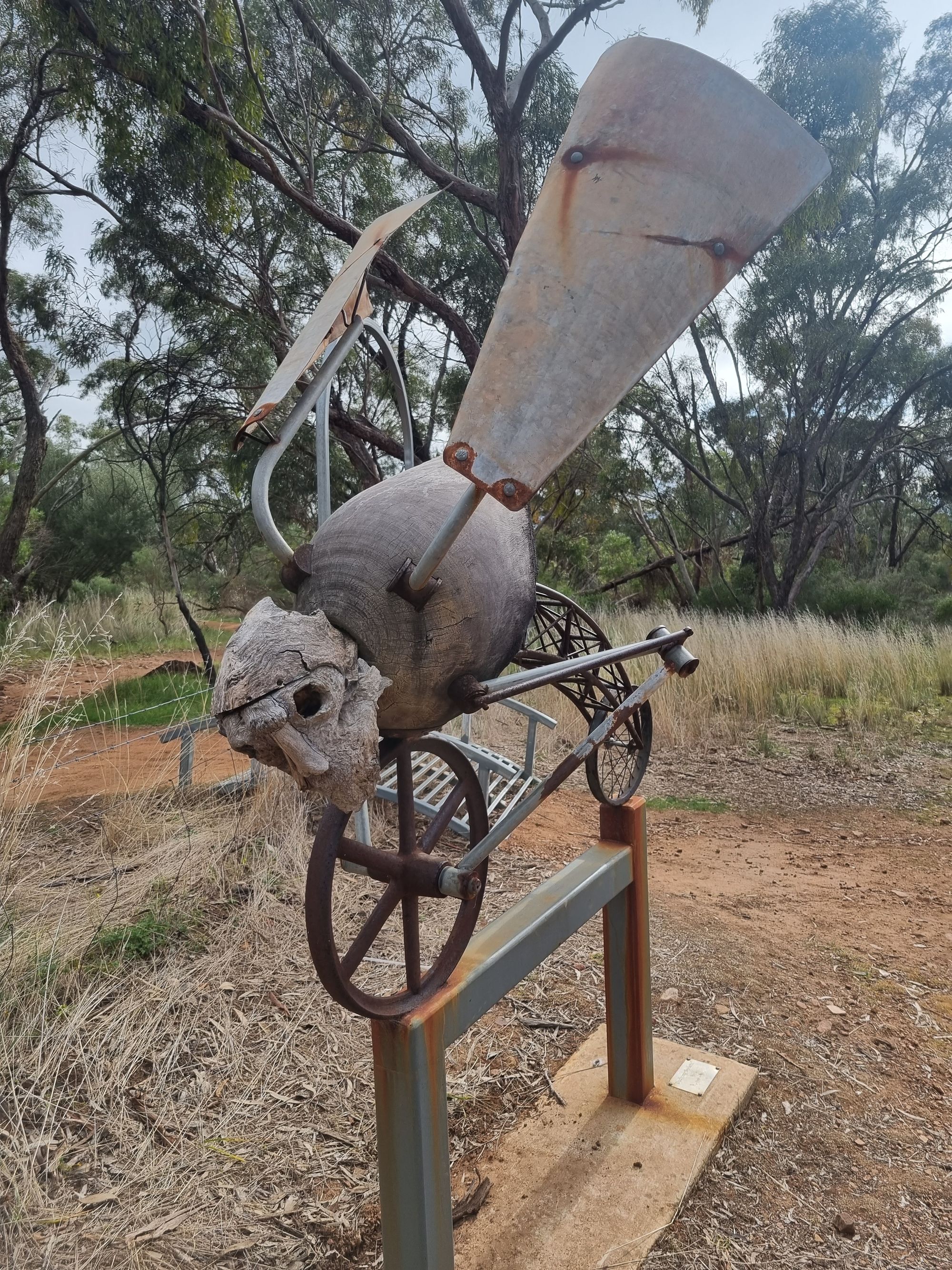
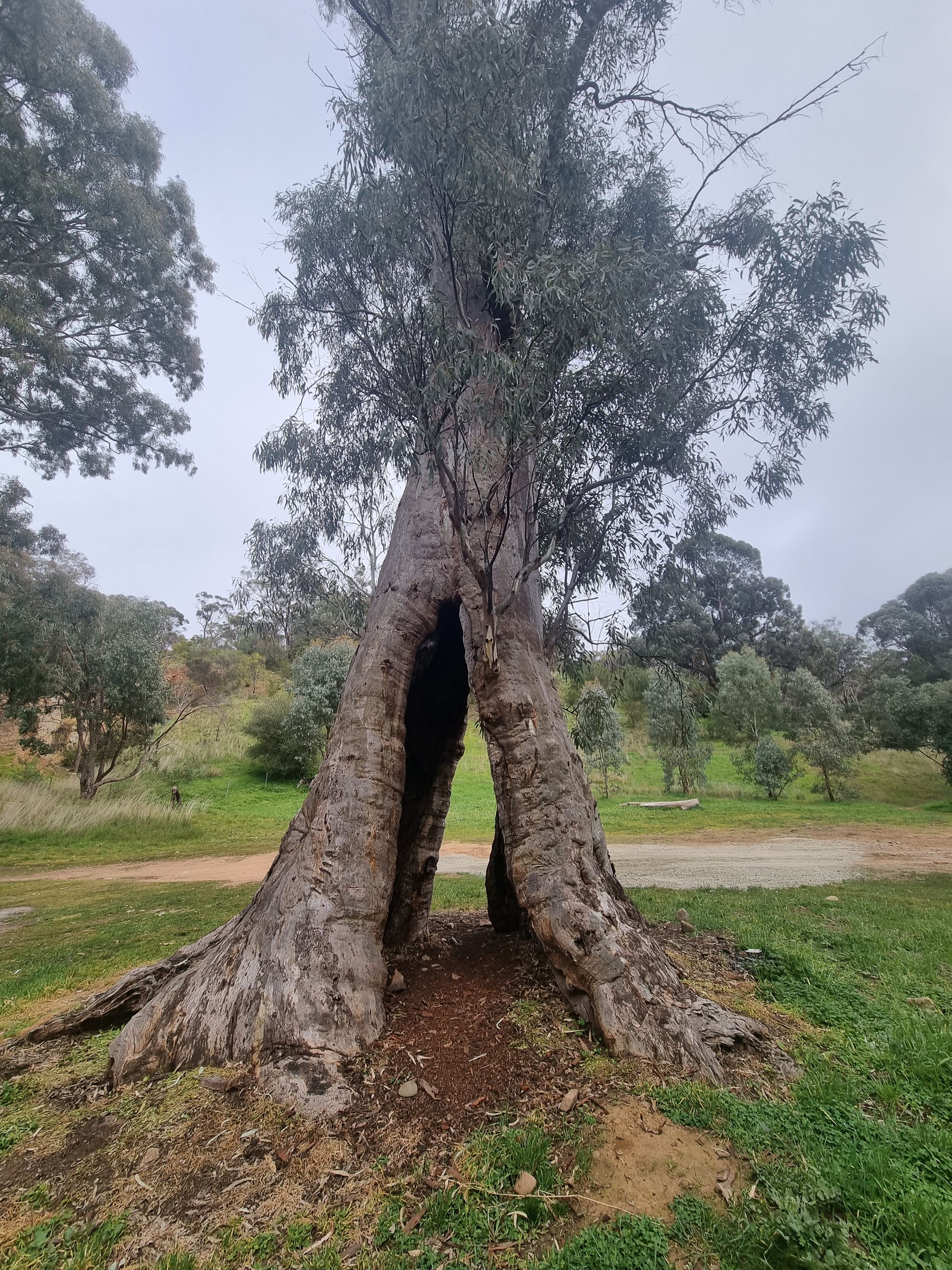
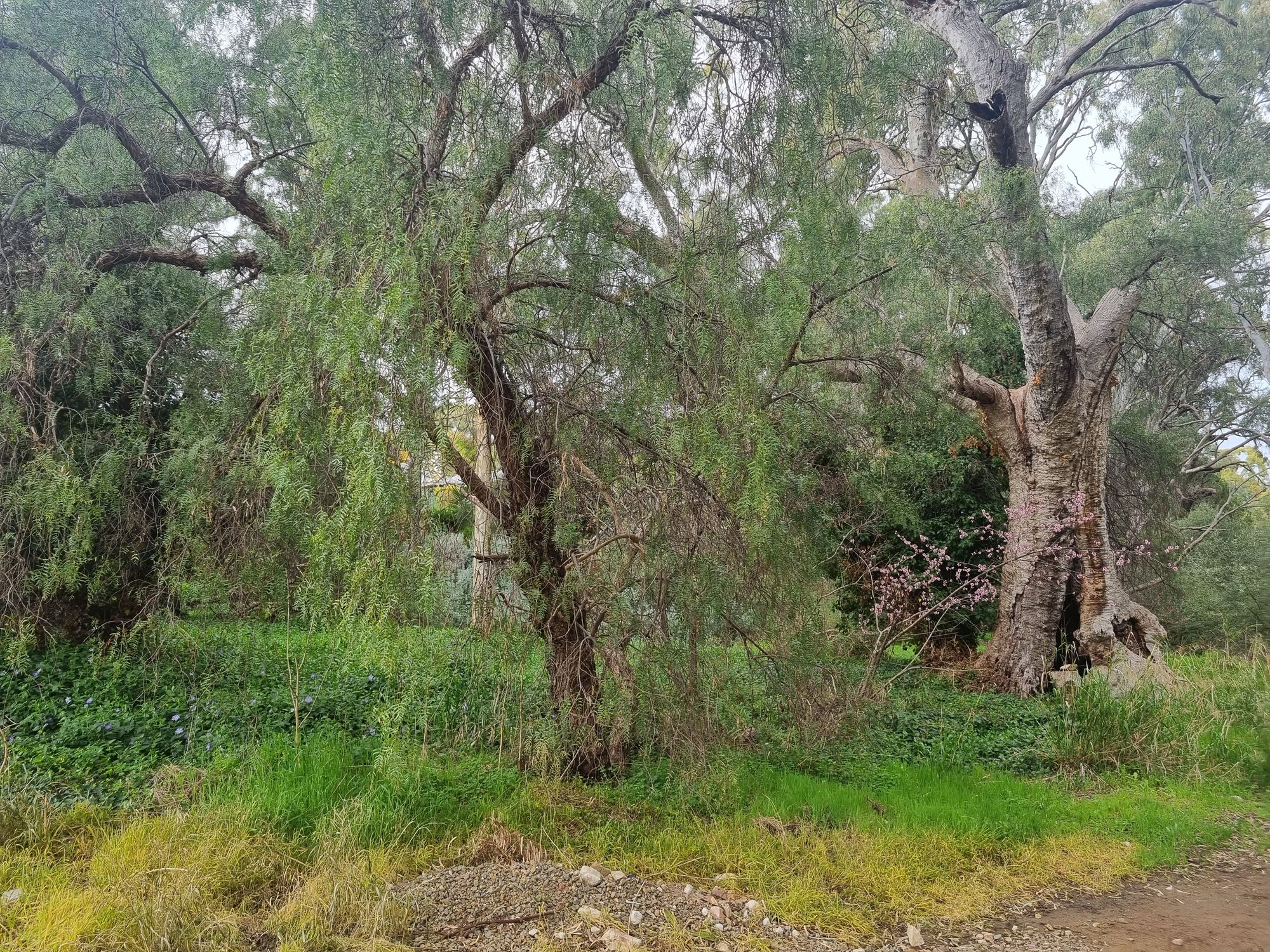
Six kilometres later, I've built up an appetite and the first cafe in town is finally open.

I need a new set of tyres, I called the local shop in Broken Hill on Monday after failing at Port Lincoln and they can supply some. So that'll be my final destination today, which means it is time to get going.
I set my GPS for Mount Bryan East and huddle into my clothes as I cross the rolling hills of the highlands.

The temperature has gone up, but not as much as I'd hope. It's a max of 11°C throughout the region today and dips to 9°C as I head into Jamestown. The sight of windfarms everywhere doesn't bode well for windchill either.
Jamestown is the birthplace of RM Williams. Anyway, continuing on, I reach Hallett and turn left onto the dirt road for the Dares Hill Tourist Drive.

I'm heading for the birthplace of Sir George Hubert Wilkins. Coined "The Last Explorer", Wilkins was born here in 1888 before setting off to pursue cinematography, early days aerial exploration, achieving unheard of military accolades, joining Shackleton's exploration of the poles and then charting most of the north and south poles on his own, taking a submarine under the ice of the Arctic to prove it wasn't a continent and many, many others.
Twenty kilometres of dirt later, though, it seems the universe has decided my fake, modern attempts at "exploration" needs some rough ground. I feel the back tyre dig in, and immediately know the feeling of a flat tyre.
I'm four kilometres from the homestead and a long way from any tyre shops. It's a pretty big tear in an already sad tyre, I bundle a couple of silly strings, soak them in rubber cement and try my luck at patching.
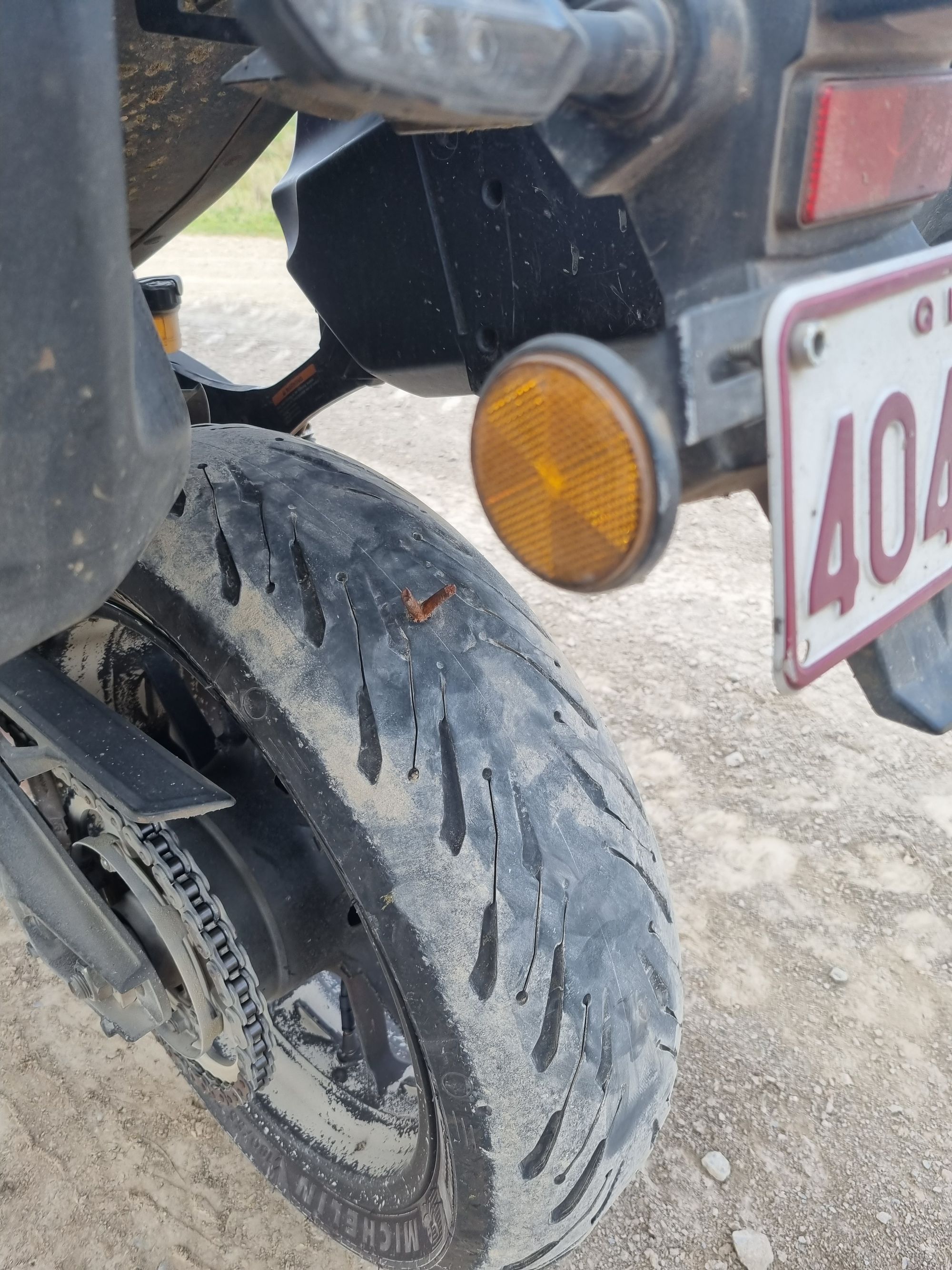
With the sign to the homestead opposite my breakdown, I decide it's only fitting to complete this expedition on foot, like Sir Wilkins was forced to do so many times in far more adverse conditions.

I've been here forty minutes fixing and inflating the tyre, but naturally the first sign of civilisation is a farmer approaching as I'm pantsless removing my thermals. He shakes his head and drives off.

A fellow rider, although with a real adventure bike, approaches me and is quite confused. He's never heard of Hubert Wilkins and is just following the brown signs.

Catching him at the homestead, I give him a, probably unwanted, history lesson on Hubert Wilkins.
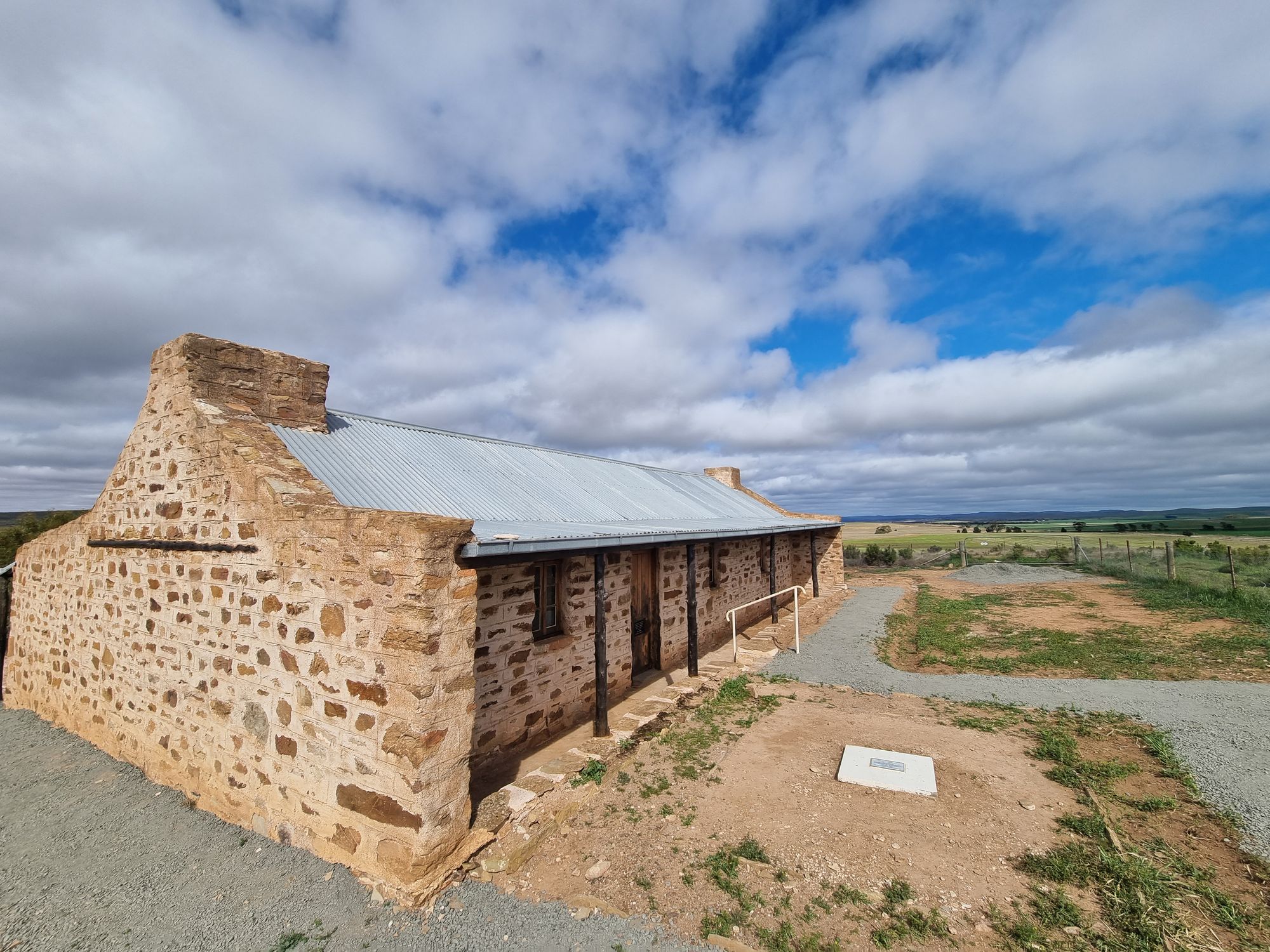
Deserved to be remembered alongside some of the greatest Australians, its argued Hubert fell into relative obscurity after partaking in a bird survey of Northern Australia (he walked most of the top end of Australia) for the British. His report back to England was highly critical of Australia's treatment of the indigenous population, as well as their complete disregard for the preservation of the environment. This got him blacklisted in Australia.

I can recommend everyone to read his biography, "The Last Explorer", as the timeline above barely scratches the surface.
The homestead has been graciously restored from ruins by Dick Smith (an avid adventurer himself) alongside his Australian Geographic company. Alongside the History Trust of SA, they have started the Sir Hubert Wilkins Foundation this year, so hopefully he is starting to get his deserved recognition.
It seemed fitting to me the last of my exploration should conclude at the birthplace of one of the greatest explorers, but it seems that isn't allowed to be the case.
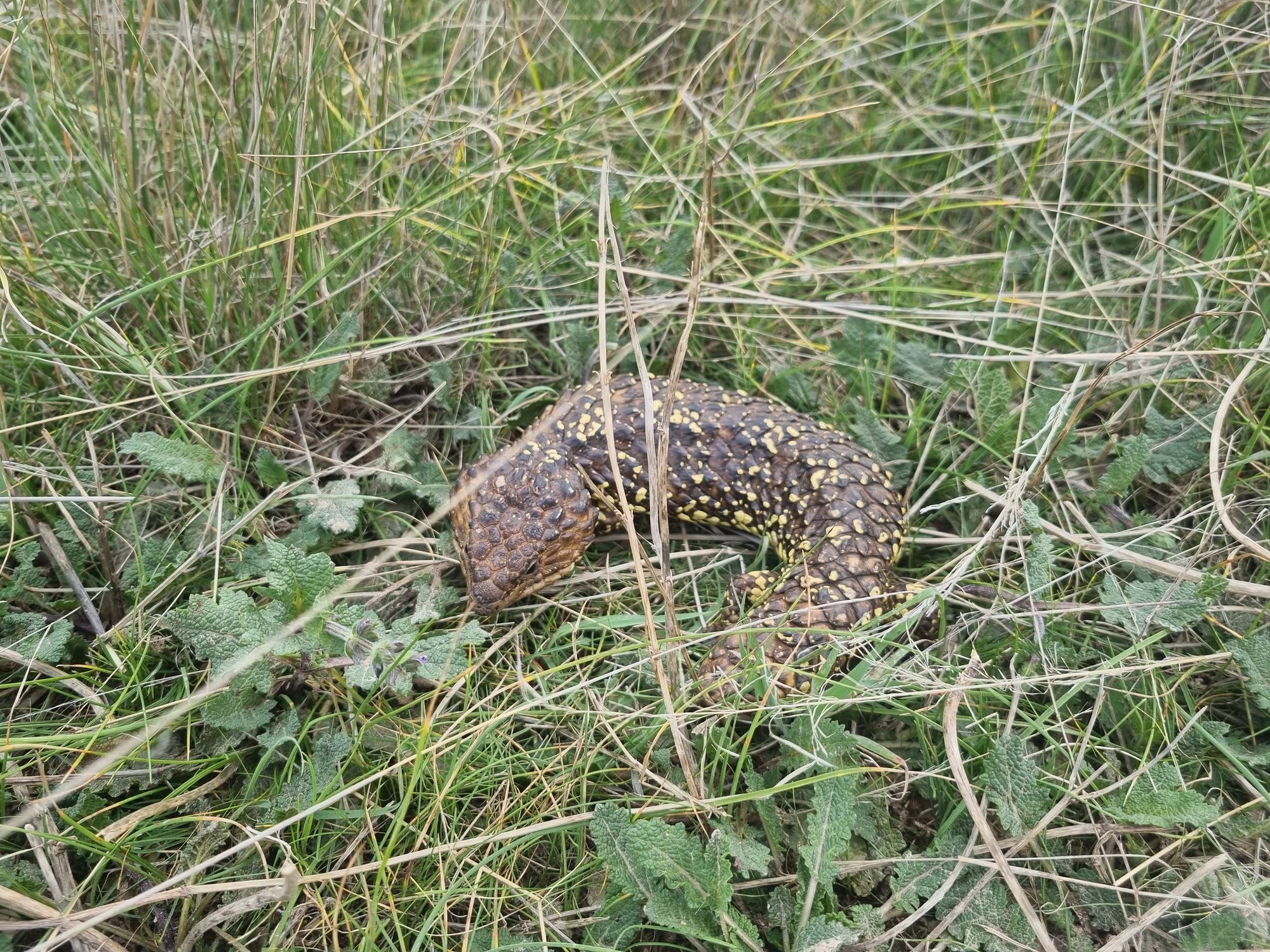
As I walk back along this rural road through pretty countryside, I wonder what it looked like to Hubert Wilkins. Born to a world of horse and cart, of early days of the telegraph, of candlelit evenings. The dawn of electricity, of automobiles and planes, he set off into the true unknown trusting his own ingenuity to save him.
Today there is a 4G tower ontop of Mount Bryan giving me instantaneous communications to anywhere in the world, access to all the worlds encyclopedias, instruction manuals and videos from world experts in all fields. There's an EPIRB on my bike to signal for emergency help no matter where I am. Even the remotest places I've been on this trip, a car, a truck, a hiker or a nearby home won't be far away.
I'm as much an explorer as Hubert, as a child, was exploring the open countryside near his homestead.
I wonder what affect that safety net has had on society, always someone else there to bail you out, to prevent you needing to innovate out of a bad situation.
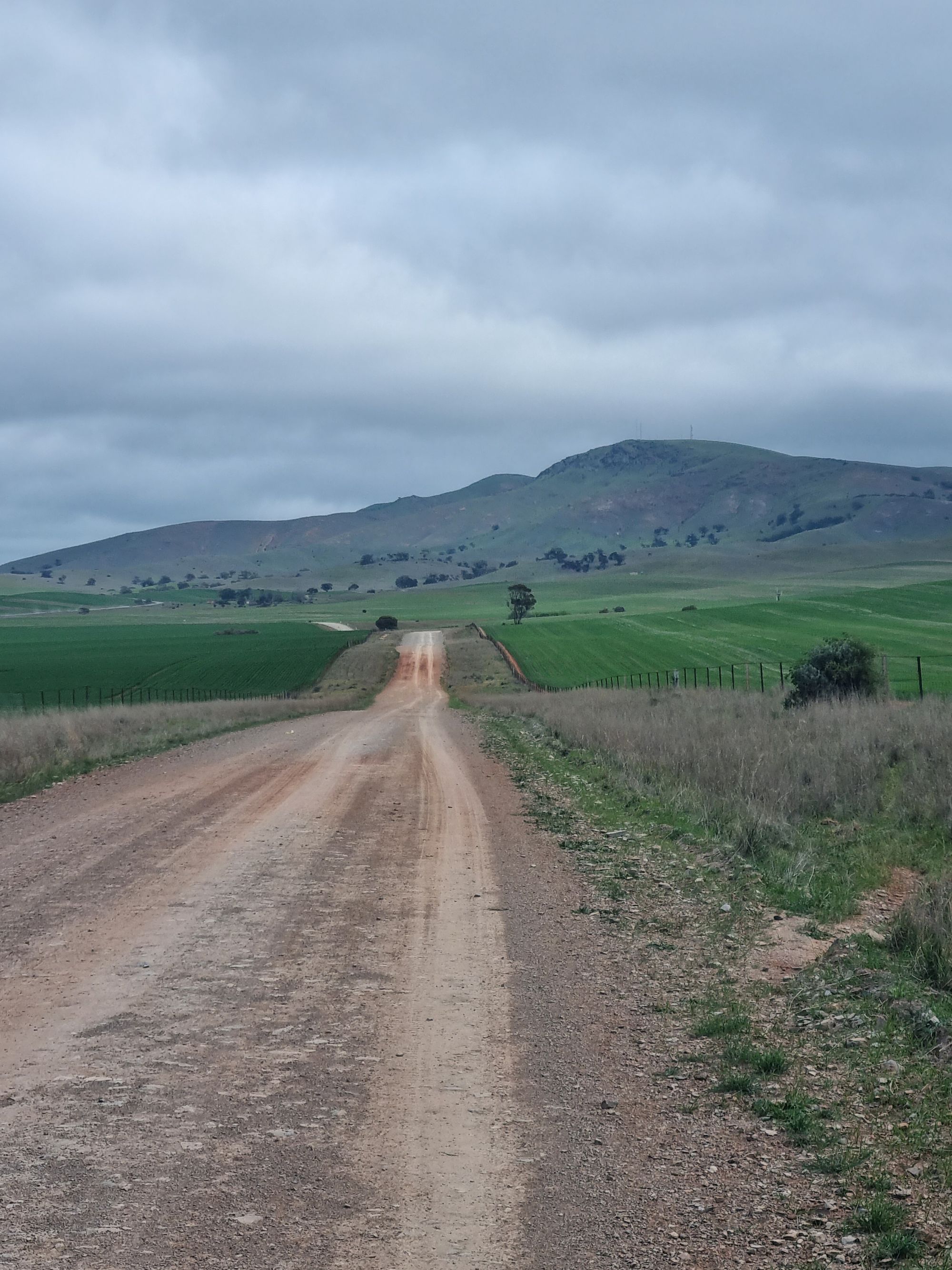
There's still air in the tyre, but I'm not terribly excited about another three hundred kilometres to Broken Hill, so I ring around with minimal success.
Burra Tyres, however, are highly accomodating, offerring to get some tyres overnighted from a supplier they don't like. They send me the contact number for a nearby cottage to stay in, offer to store my bike securely overnight and even say they can pick me up if the patch doesn't hold. South Australian hospitality at its finest.
I set my sights on nearby Barra, thirty kilometres of dirt down the road. The tyre holds up fine. I check in to my 1871 cottage, ditch my gear and then head to drop off the bike.
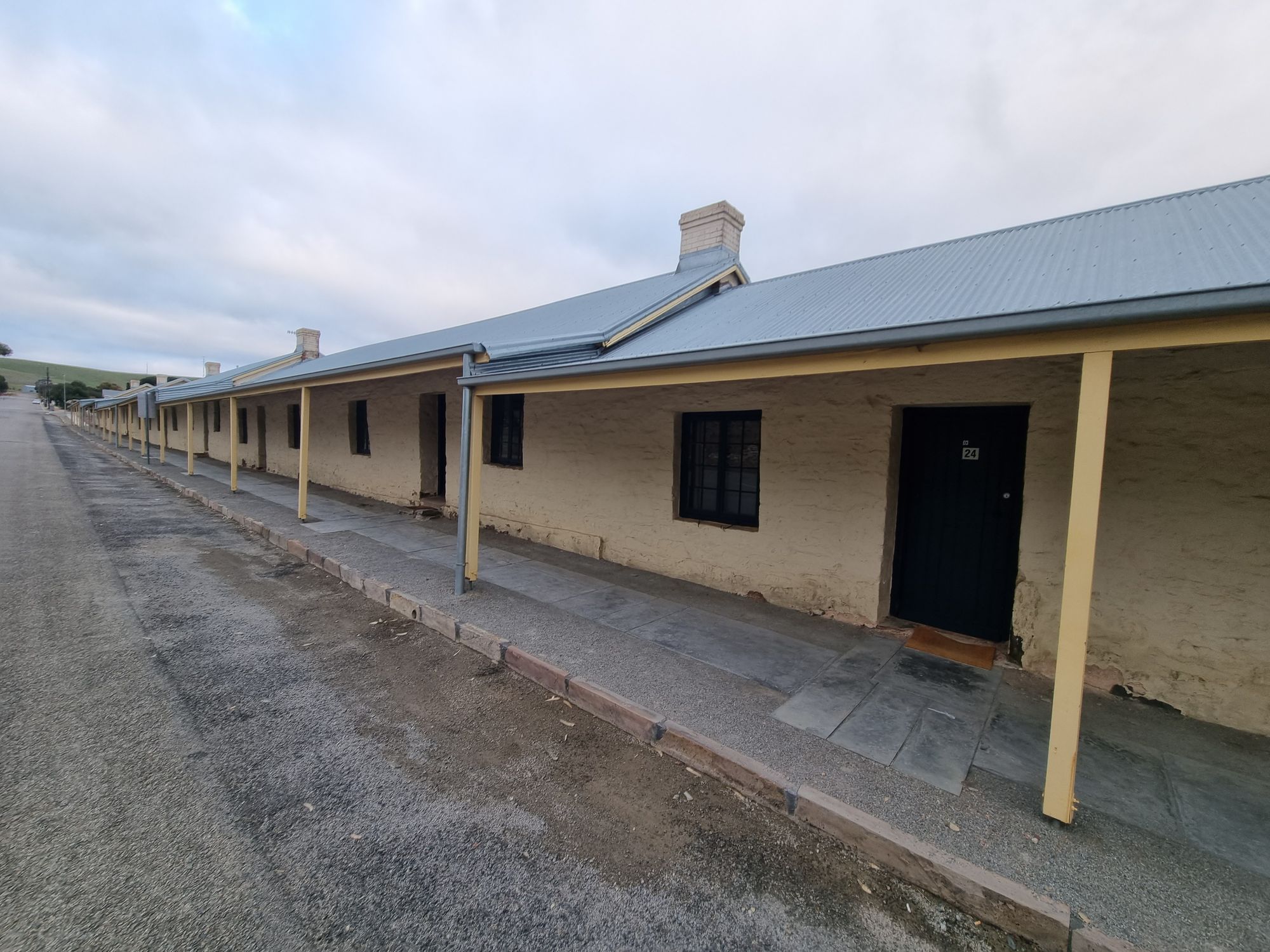
I know nothing of Burra. Despite living in South Australia for six months, I never made it this far north east. It turns out Burra is a pretty fascinating place. I take a long detour on the walk from the tyre shop to my cottage, toward a sign advertising a mine lookout.

It's a little more than just a pit though, I've stumbled on an open air museum displaying the 19th century Burra Burra mine. At one point the largest mine in Australia, providing 5% of the worlds copper ore.
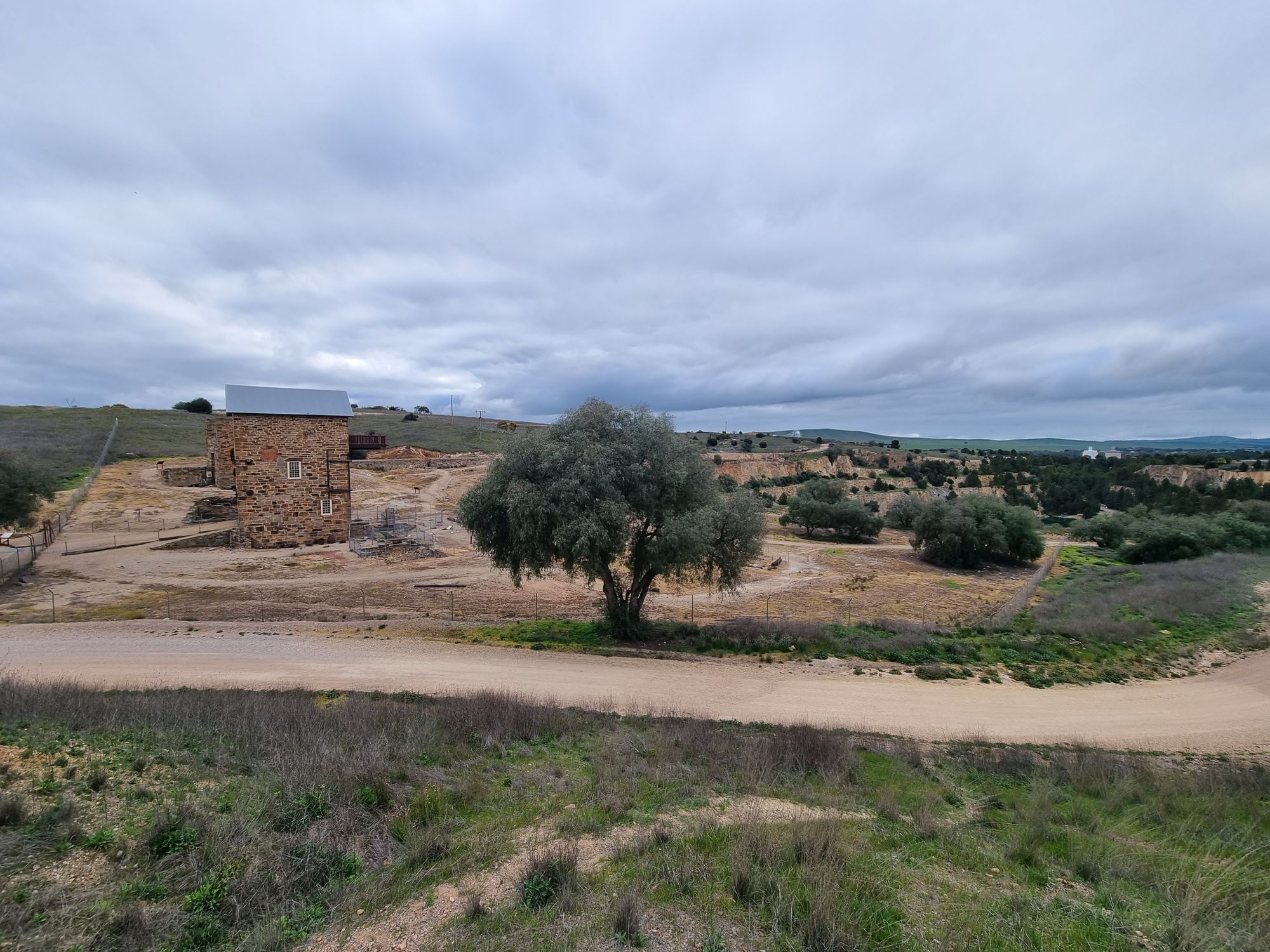
The original buildings from the mine's operating years of 1840 to 1877 have been left, and restored, along the edges of the mine. A "passport key" from the visitor centre allows you access to the buildings.

The Cornish had a pretty solid hold on mining operations back then with the boilers, the tramways, the waterwheels and most of the working men originating from there.
Established at the outset of the mine by the union owned South Australian Mining Company, Burra was the first "company town" in Australia. Freehold land outside the leaseland was quickly released and resulted in Burra having three distinct townships next to each other. Quickly growing to the 7th largest town in Australia.
The mine didn't last though, hitting the water table meant extracting ore become extremely difficult and converting to an open pit mine only bought a bit more time. The township stopped growing.
This lack of growth provides an interesting snapshot in time as the majority of the town buildings date back to the 19th century.
The bike won't be ready till after midday tomorrow, so I decide to book another night in town and do a bit more exploration.